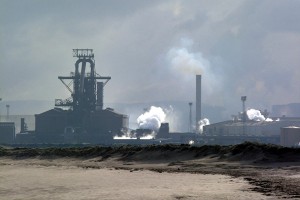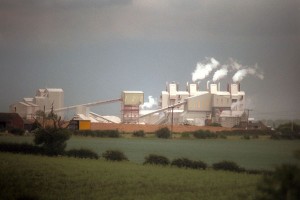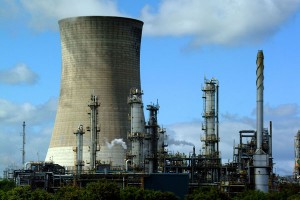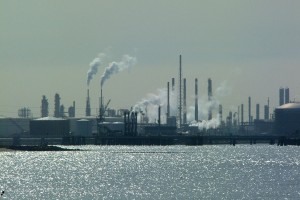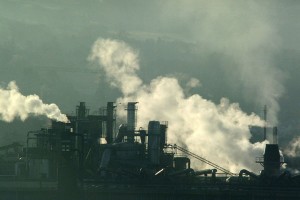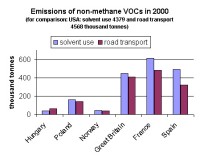 > English > Climate Encyclopaedia > Climate in Cities > more > 1. Air Pollution > - Industry
> English > Climate Encyclopaedia > Climate in Cities > more > 1. Air Pollution > - Industry
|
Urban ClimateRead more |
Industry and other economic sectorsAlthough energy production and transport are the most common sources of air pollution, industry and agriculture also emit significant amounts of pollutants into the air. |
|
Metallurgy is the main industrial source of air pollution delivering primarily sulphur dioxide (SO2) and highly toxic heavy metal containing dust. Steel works emit large amounts of carbon monoxide (CO), and aluminium works produce lots of fluorine which is very harmful to living organisms.
|
Factories producing materials for the building industry emit large amounts of dust to the atmosphere. Cement plants discharge chemically neutral dust in huge quantities. This dust can be transported large distances by the wind and affect areas far away from the cement plant itself. Other types of factories in this sector include quarries, glass-works, aggregate-processing plants and ceramic plants. They tend to only have a local impact on air pollution.
|
|
|
The chemical industry emits a wide variety of pollutants, the types dependant on the chemicals being manufactured. Common chemicals produced include nitrolime, phosphates, petrol, car oils and greases and artificial fibres. During nitrolime (saltpetre) production, lots of dust containing saltpetre, urea, ammonia (NH3) and nitrogen oxides (NOx) are emitted into the air. Phosphate manufacture involves the use of sulphuric acid (H2SO4) and as a result, significant amounts of sulphur are emitted into the air. The process also causes emissions of fluorine and dust.
|
Refineries producing petrol, car oils and greases, emit mainly SO2 and hydrocarbons, but also smaller amounts of other very toxic substances such as ammonia, acetone, benzene, phenol, xylene, toluene and lead. The basic raw materials in the production of artificial fibres are carbon disulphide (CS2) and hydrogen sulphide (H2S). Both these substances are also emitted into the air. Apart from being highly toxic, they also have a very unpleasant smell.
|
|
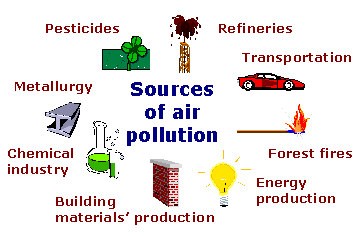 |
|
5. Main anthropogenic sources of air pollution. Click on the image (56 K) to see the kinds of air pollution from each source. Authors: Pawel Jezioro, Anita Bokwa.
|
Other branches of industry worth mentioning are: 1) paper-mills which emit many malodorous substances and 2) machine manufactures who use plating and varnishing processes, these emit heavy metals and organic solvents. |
|
|
Agriculture is also a source of air pollution. Large stores of manure emit gases such as ammonia (NH3). Artificial fertilizers and pesticides are often spread over fields from aeroplanes and this delivers very fine droplets of the chemicals into the air. Another massive process is the incineration of rubbish. It is estimated that the amount of air pollution emitted by all rubbish burning plants is equal to the amount of air pollution generated during vegetation fires. Erosion of the soil surface can generate large amounts of fine particles which can be transported large distances by the wind.
|
|
Related pages: Read more about natural sources of VOC's in:
|
|
About this page:Authors: Pawel Jezioro, Anita Bokwa - Jagiellonian University - Cracow / Poland |

